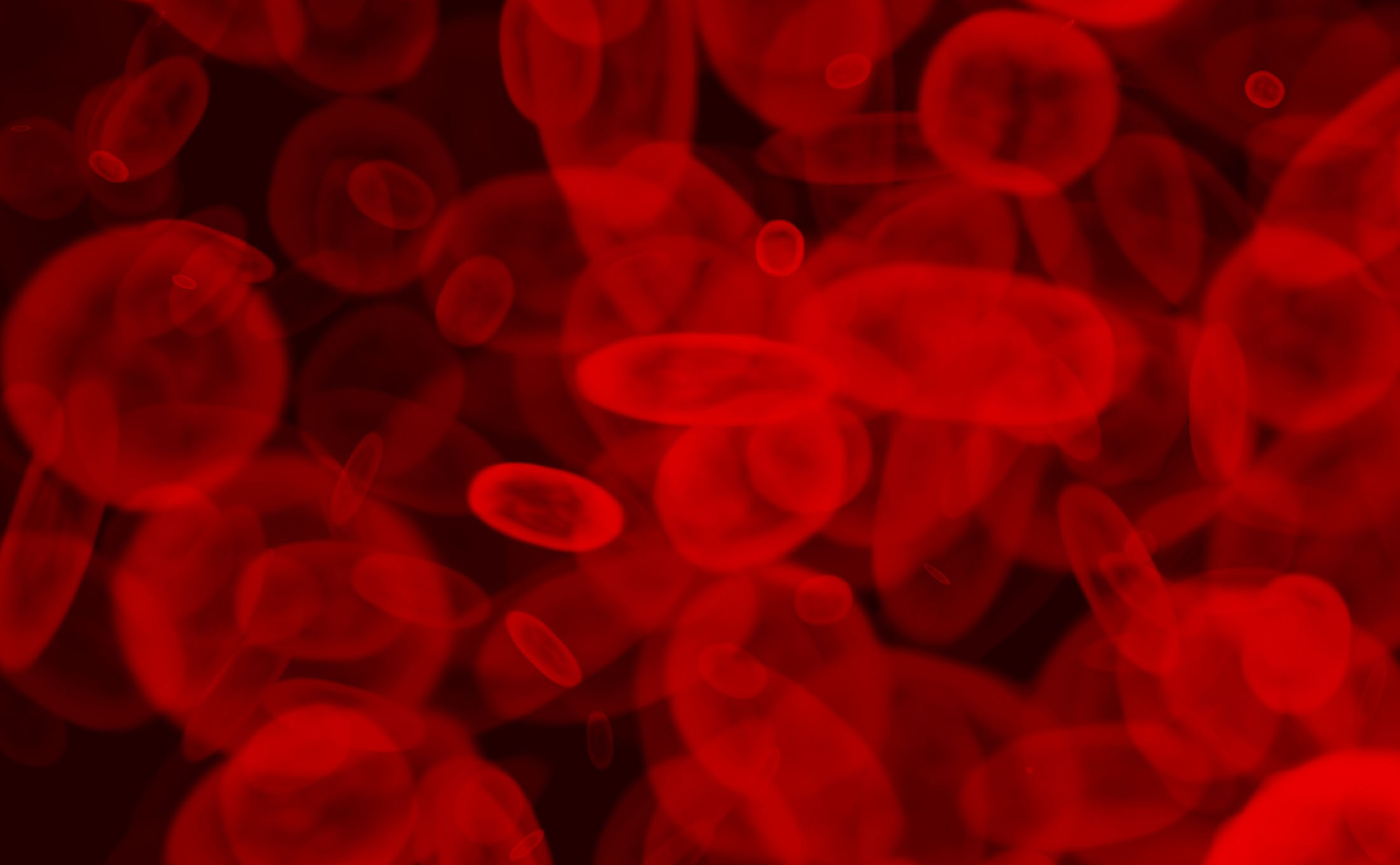Deposition of excess iron from multiple transfusions or increased absorption preferentially occurs in the liver, heart, pituitary, thyroid, pancreas, the gonads, and the skin. Saturation of transferrin receptors leaves non-transferrin-bound iron, which generates free radicals that harm membranes, proteins, and nucleic acids, resulting in tissue damage. This damage can be minimized or prevented through chelation; therefore, all patients at risk of iron overload should be screened periodically.Assessment of iron levels can be performed by the following methods.
Frequency of Transfusions
Normal erythropoiesis accounts for approximately twothirds of the iron content of the human body. The scenescent red blood cells (RBC) are taken up by the reticuloendothelial macrophages of the liver and the hemoglobin is efficiently catabolized to release the iron for recycling. Since there is no physiologic mechanism for removal of iron, chronic transfusion-dependent patients have increasing iron stores and develop an iron excess of ~0.4 to 0.5mg/kg/day.3With a single unit of blood containing approximately 200mg of iron, 10–20 transfusions can lead to clinical signs of iron overload.3
Serum Ferrit in Levels
After intake, iron is normally sequestered in protein complexes. Serum transferrin is the iron transport protein in blood and extracellular fluid, while ferritin binds intracellular iron. Ferritin is a protein, found mainly in the liver, that can store approximately 2,250 iron ions. Serum ferritin level has traditionally been used as an indicator of total body iron stores under steady state conditions. However, it may not always be the most reliable test since it is also an acute phase reactant and may be elevated either because of the disease process itself or due to inflammation. This uncertainty, at least for inflammation, can be eliminated by documenting a normal level of C-reactive protein in the presence of high ferritin levels. The advantages of measuring ferritin are that the test is non-invasive and has been well correlated with liver biopsy or surrogate measurements of total body iron.4 Serum ferritin, therefore, remains the most inexpensive and widely available method to document iron overload.When the levels of ferritin rise to >1,000ng/ml, it is important to consider some form of treatment for the iron overload and the efficacy of chelation can be monitored by serum ferritin levels. It should be noted, however, that ferritin levels represent approximations since the effect of chelation on ferritin is not always linear and may differ between various chelating agents.
Liver Iron Concentration
The most precise measurement of total body iron is liver iron concentration (LIC) as measured by a liver biopsy, especially since this test does not suffer from the limitations of the serum ferritin assay. LIC > 7mg/g dry weight is generally considered an indicator of iron overload. Despite the greater accuracy of this test, the risks involved with the biopsy procedure, especially in patients with thrombocytopenia, limit its widespread use. Other limitations include patient acceptance, distribution artifacts and failure to obtain an adequate sample size (> 1mg dry weight).
Magnetic Resonance Imaging
An important non-invasive modality that is rapidly becoming available for assessing iron overload is magnetic resonance imaging (MRI).This technique can provide a gross estimation of hepatic iron5 that allows normal hepatic iron load to be distinguished from abnormal deposits. The technique has been validated through preliminary testing on MRI machines from several manufacturers at several institutions.6 Even though MRI machines have to be calibrated for LIC measurement, they may become the most commonly used, accurate, safe, and non-invasive technique to document iron overload in the clinical setting.6
Cardiac Iron—MRI by T2
The leading cause of death in transfusion-dependent patients is iron-induced cardiac dysfunction and a direct correlation between the extent of iron overload and left ventricular ejection fraction (LVEF) has been demonstrated.7 Neither serum ferritin nor liver iron can measure myocardial iron content before advanced damage to cardiac tissue.To avoid the complications of a cardiac biopsy, the MRI T2 has been developed for quantifying myocardial iron deposits. This procedure has proved to be the best predictor of aberrant ventricular function.
Superconducting Quantum Interference Device
The superconducting quantum interference device (SQUID) has been used to measure LIC and provides quantitative data that are as accurate as the results of a liver biopsy.7,8 Unfortunately, very few instruments are currently available for routine clinical use.
Conclusion
Patients receiving regular blood transfusions or those with increased iron absorption should be followed and screened periodically for iron overload. Because several tests can document the presence of excess iron, the invasiveness, accuracy, and cost of the test along with patient concerns need to be considered. While LIC is considered the most direct measure of total body iron and a liver biopsy its most accurate assessment, it is not commonly used because of its invasive nature. In routine clinical practice, the indirect indicators therefore continue to be the total number of transfusions and the ferritin level. MRI studies provide a non-invasive and accurate measurement of iron deposition in multiple organs simultaneously, and will likely become the method of choice for measuring LIC in the near future.







